What constitutes a ‘document’ and how does it function?
According to the Oxford English Dictionary, the etymological origin is the Latin ‘documentum’, meaning ‘lesson, proof, instance, specimen’. As a verb, it is ‘to prove or support (something) by documentary evidence’, and ‘to provide with documents’. The online version of the OED includes a draft addition, whereby a document (as a noun) is ‘a collection of data in digital form that is considered a single item and typically has a unique filename by which it can be stored, retrieved, or transmitted (as a file, a spreadsheet, or a graphic)’. The current use of the noun ‘document’ is defined as ‘something written, inscribed, etc., which furnishes evidence or information upon any subject, as a manuscript, title-deed, tomb-stone, coin, picture, etc.’ (emphasis added).
Both ‘something’ and that first ‘etc.’ leave ample room for discussion. A document doubts whether it functions as something unique, or as something reproducible. A passport is a document, but a flyer equally so. Moreover, there is a circular reasoning: to document is ‘to provide with documents’. Defining (the functioning of) a document most likely involves ideas of communication, information, evidence, inscriptions, and implies notions of objectivity and neutrality – but the document is neither reducible to one of them, nor is it equal to their sum. It is hard to pinpoint it, as it disperses into and is affected by other fields: it is intrinsically tied to the history of media and to important currents in literature, photography and art; it is linked to epistemic and power structures. However ubiquitous it is, as an often tangible thing in our environment, and as a concept, a document deranges.
the-documents.org continuously gathers documents and provides them with a short textual description, explanation,
or digression, written by multiple authors. In Paper Knowledge, Lisa Gitelman paraphrases ‘documentalist’ Suzanne Briet, stating that ‘an antelope running wild would not be a document, but an antelope taken into a zoo would be one, presumably because it would then be framed – or reframed – as an example, specimen, or instance’. The gathered files are all documents – if they weren’t before publication, they now are. That is what the-documents.org, irreversibly, does. It is a zoo turning an antelope into an ‘antelope’.
As you made your way through the collection,
the-documents.org tracked the entries you viewed.
It documented your path through the website.
As such, the time spent on the-documents.org turned
into this – a new document.
This document was compiled by ____ on 17.11.2022 11:33, printed on ____ and contains 22 documents on _ pages.
(https://the-documents.org/log/17-11-2022-4854/)
the-documents.org is a project created and edited by De Cleene De Cleene; design & development by atelier Haegeman Temmerman.
the-documents.org has been online since 23.05.2021.
- De Cleene De Cleene is Michiel De Cleene and Arnout De Cleene. Together they form a research group that focusses on novel ways of approaching the everyday, by artistic means and from a cultural and critical perspective.
www.decleenedecleene.be / info@decleenedecleene.be - This project was made possible with the support of the Flemish Government and KASK & Conservatorium, the school of arts of HOGENT and Howest. It is part of the research project Documenting Objects, financed by the HOGENT Arts Research Fund.
- Briet, S. Qu’est-ce que la documentation? Paris: Edit, 1951.
- Gitelman, L. Paper Knowledge. Toward a Media History of Documents.
Durham/ London: Duke University Press, 2014. - Oxford English Dictionary Online. Accessed on 13.05.2021.

Coming back from holidays, we were waiting for the ferry to take us from Ramsgate to Ostend. We were well on time. As the ship entered the harbour, I asked my parents if I could take a photograph. It’s the first photograph I recall taking. I remember my dad telling me to wait long enough for the ship to get closer. I didn’t. I only got one try.1
It took a while before the film was developed. I couldn’t stop imagining what the photograph would look like: some picturesque waves in the foreground, the shining white ship, the red and blue text on the side, and a cloud filled sky.
Following every holiday, when we got home, the garden and our house would be photographed with the remaining exposures on the roll of film in the camera.
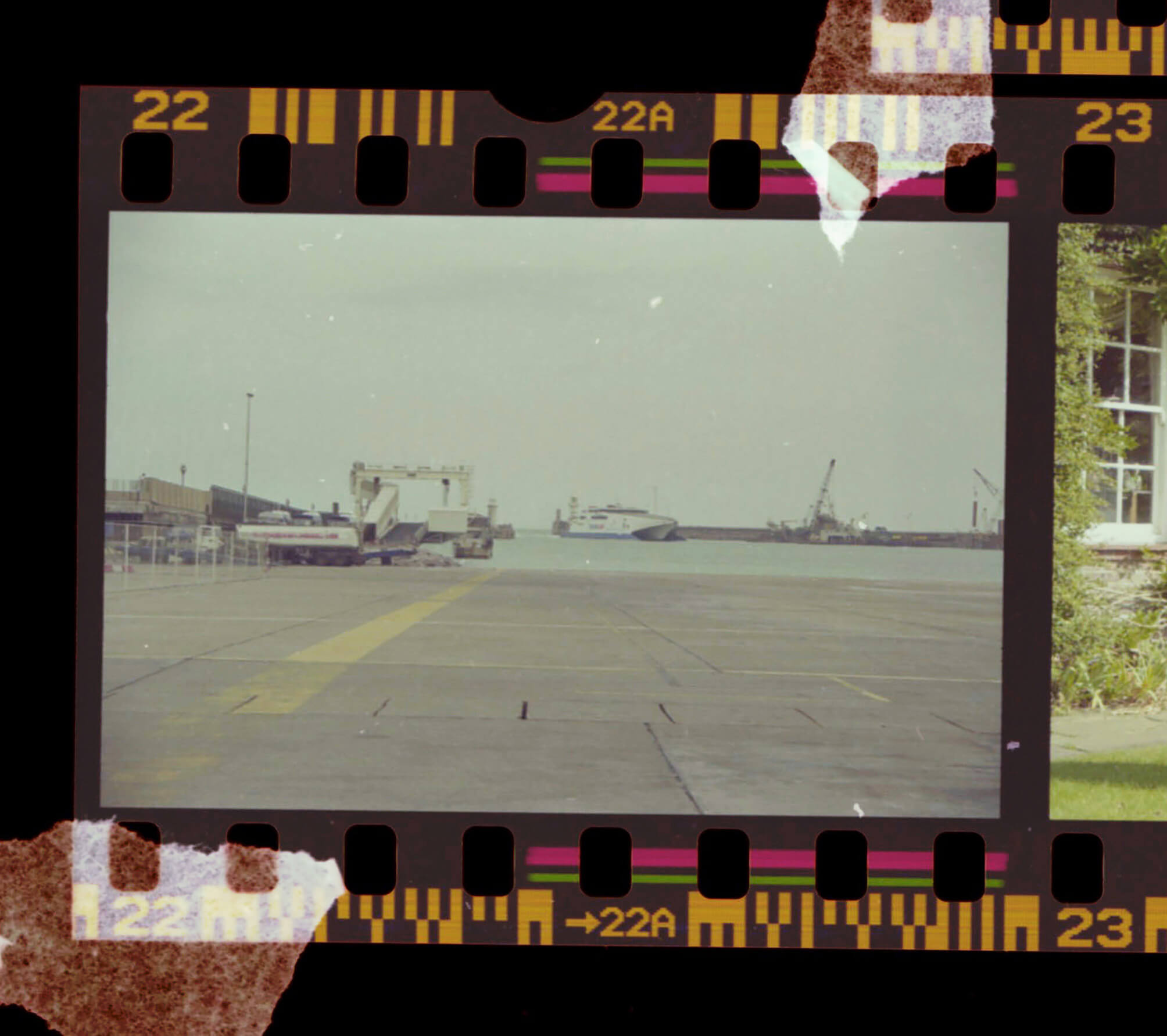
Sundown at the public observatory in Beisbroek. A choir of birds mixes with the continuous hiss of the freeway nearby. The camera captures the receding colours. The blinds are open; the half dome is closed.
A documentary approach: moving along a tension between proximity and distance. If the pendulum swings to either side, it becomes difficult to speak of the documentary. Proximity without distance, and distance without proximity, undermine it, precisely because any approach is then out of the question.
Excerpt from Towards Civil Dusk (De Cleene De Cleene, 2020)

In Six Stories from the End of Representation, James Elkins writes: ‘Astrophysicists are well practised in “cleaning up” photographic plates by adjusting colour and contrast, removing images of dust, correcting aberrations, restoring lost pixels, and balancing uneven background illumination. When it comes to blur, the usual strategy is to specify what counts as “smooth” and what counts as “pointlike,” and then refine the image until it exhibits the required pointlike properties’1. Still, some astronomic images keep a certain amount of blur (although it would be technically possible to delineate them). Elkins continues: ‘blur does not need to be a matter of distance from some hypothetical optimal clarity: it can be a functional scale, independent of the viewer’s notions of clarity and even of the image itself’2.
On the night of 22 November 2021, I join John Sussenbach in his backyard while he captures Neptune.
He invites me to join him and his wife for dinner. A prayer. Soup and bread. The images he makes, he explains, are complex from a temporal point of view. The light coming from Neptune has travelled for four hours before it reaches us. Moreover, these images are not photographs of a singular moment, but stacked frames of a video-recording. In doing so, he can, to some extent, eliminate the effects of a bad ‘seeing’: the negative effect atmospheric turbulence has on the light that reaches the telescope.
A bright dot is jumping around on his laptop’s screen. ‘That’s Neptune’, he says. With his index finger he follows the dot. ‘That’s the bad seeing. That’s the unrest.’
The next day I send him the photograph I took of him standing on his ladder, dangerously placed on the edge of the tarp covering his pool. ‘Nice to see the open star cluster Pleiades in your photograph’, he replies. He attaches the image he made that night: ‘If there would have been a clear storm on Neptune, it would have shown’.
Image by John Sussenbach. 22 November 2021 19.00 UT North up
C14 f/11 and ASC462MC camera plus ADC, Houten (NL)
Elkins, J. Six Stories from the End of Representation. Images in Painting, Photography, Astronomy, Microscopy, Particle Physics, and Quantum Mechanics, 1980-2000. Stanford: Stanford University Press, 2008, 59.
Ibid., 62-63.
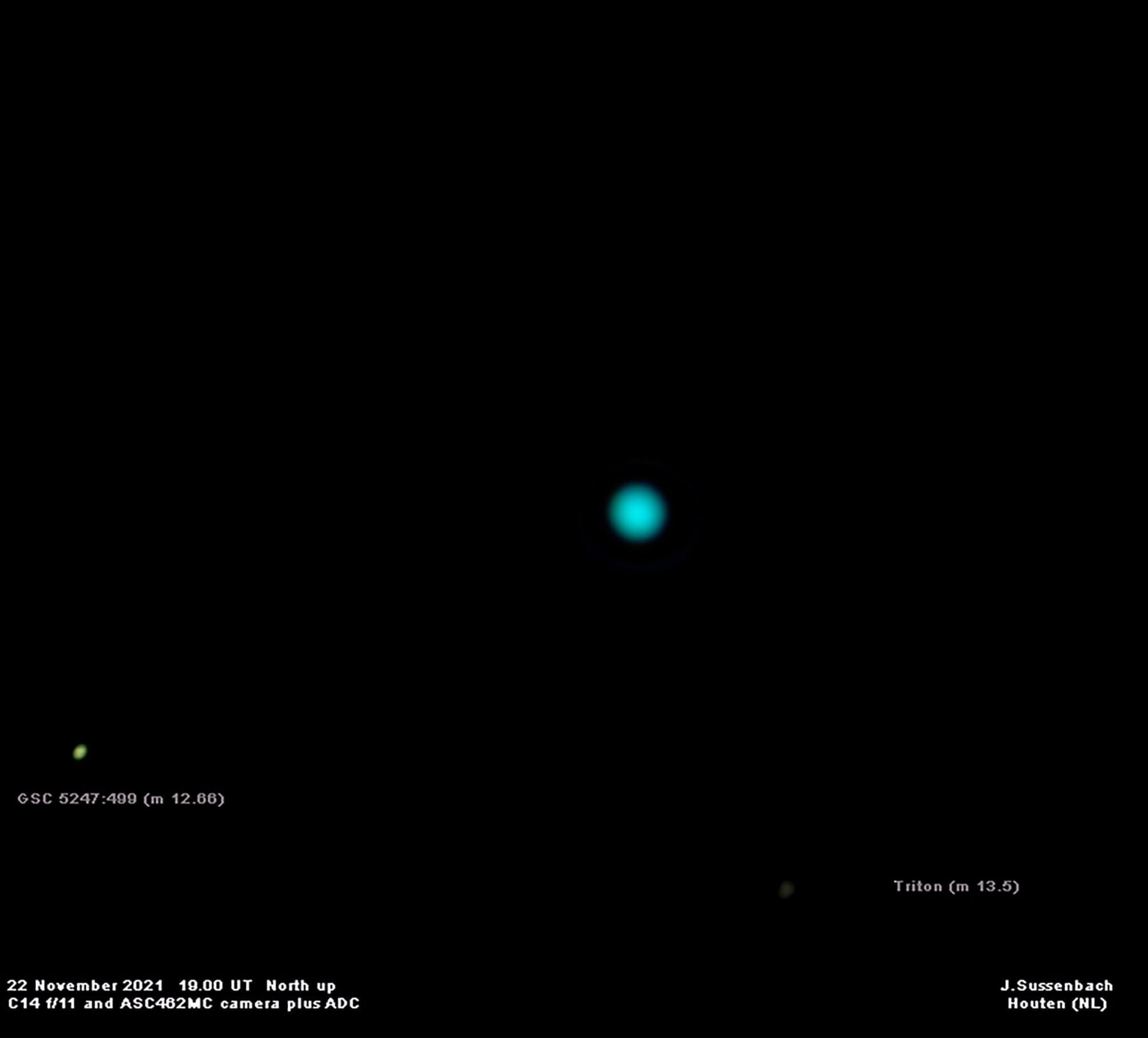

Summer 2019, between the swingset and the mesh greenhouse, astrophotographer Angelo Van Daele closes the observatory. The wheels roll smoothly across the rails embedded within a concrete slab. His former observatory is now a chicken coop. His neighbour’s trees need pruning. The camera mounted on the exterior of the shed allows him to see the instrument from inside the house.
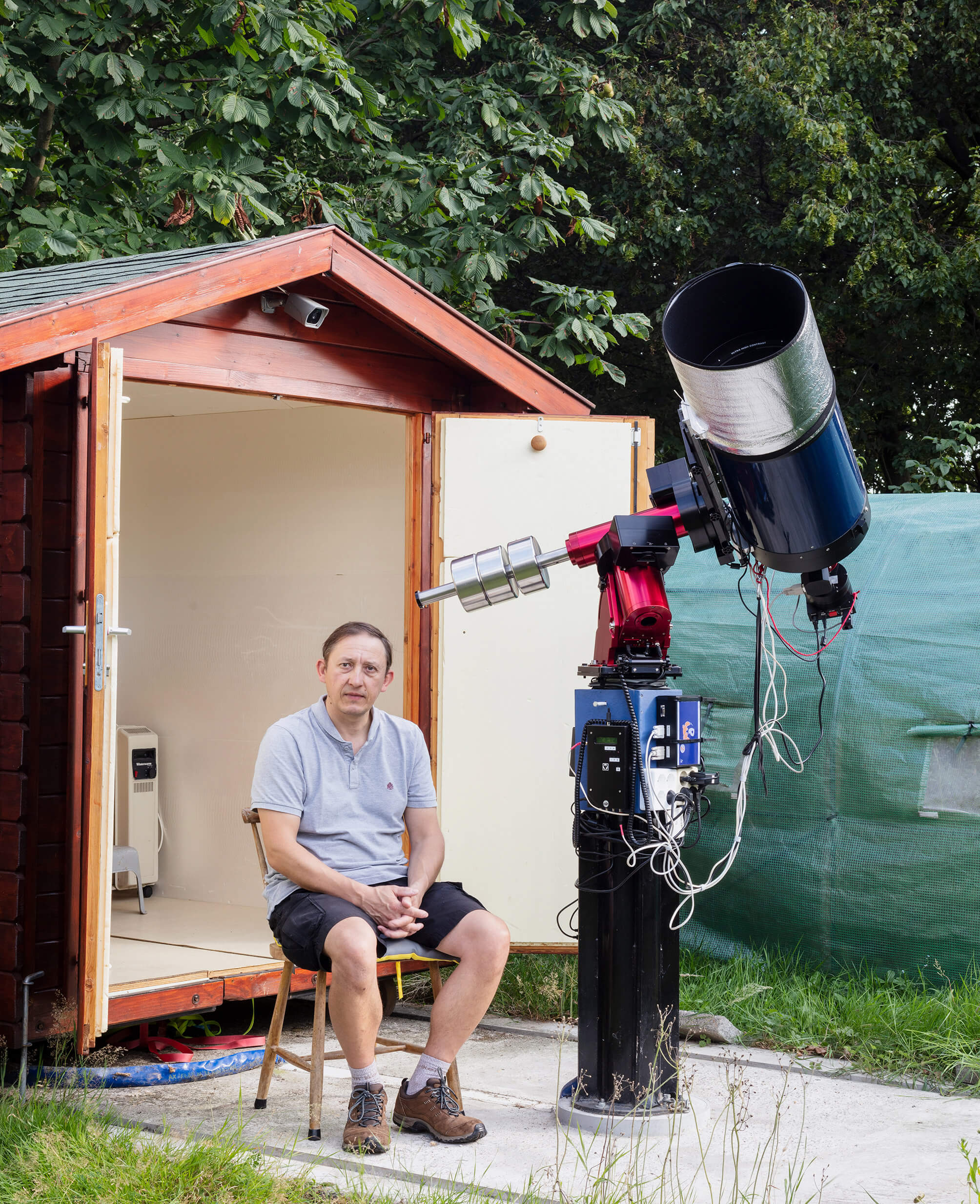
A first try at using the instrument for making a recording: excitement as we succeed in pointing the telescope at the brownish dot afar we just noticed on the other side of the valley. As it continues scavenging, we wait for night to set in.

Theory becomes the apparatus. A metonymic relation. A trope of nearness. Miniscule gravitational disturbances become known as a kilometres-long, L-shaped facility. Particle physics: a circular tunnel beneath the Geneva hinterland.
Somewhere in the early 1970s, our grandfather, a carpenter by trade, buys a telescope1,2, installs it on the lawn, and points it over the hedge. ‘I remember seeing the craters on the moon. The rings of Saturn,’ he told us.
In the shabby plywood box I made to transport the telescope lies a metal ring I ground flat to be able to attach my camera and focus it on infinity.
The hedge, now three metres in height, shields the lower part of the sky from sight and needs pruning.
Tasco / Reg. No. 83140 / 140 Power / Reflection telescope / D=3” / F=700mm / Coated optics / Model No. 3TE-R / Japan
‘It never fails to draw you in closer – the moment when you raise a pair of binoculars to your eyes. In that instant, life is magnified clearly; as if just for you. The curious bird that becomes instantly identifiable. The night sky that never looked the same after that night. The actual sweat running down the brow of a sports hero. The sun scattering light across a clear stream as you trace for signs of a Rainbow trout. These are the moments of magic that Tasco delivers. Simple, pure and honest. And for another split-second, you’re struck by the quality of experience weighed against the value you’d previously placed on “just a pair of binoculars.” Welcome to a world where, “Seeing is Believing.”’ (Tasco Manifesto).

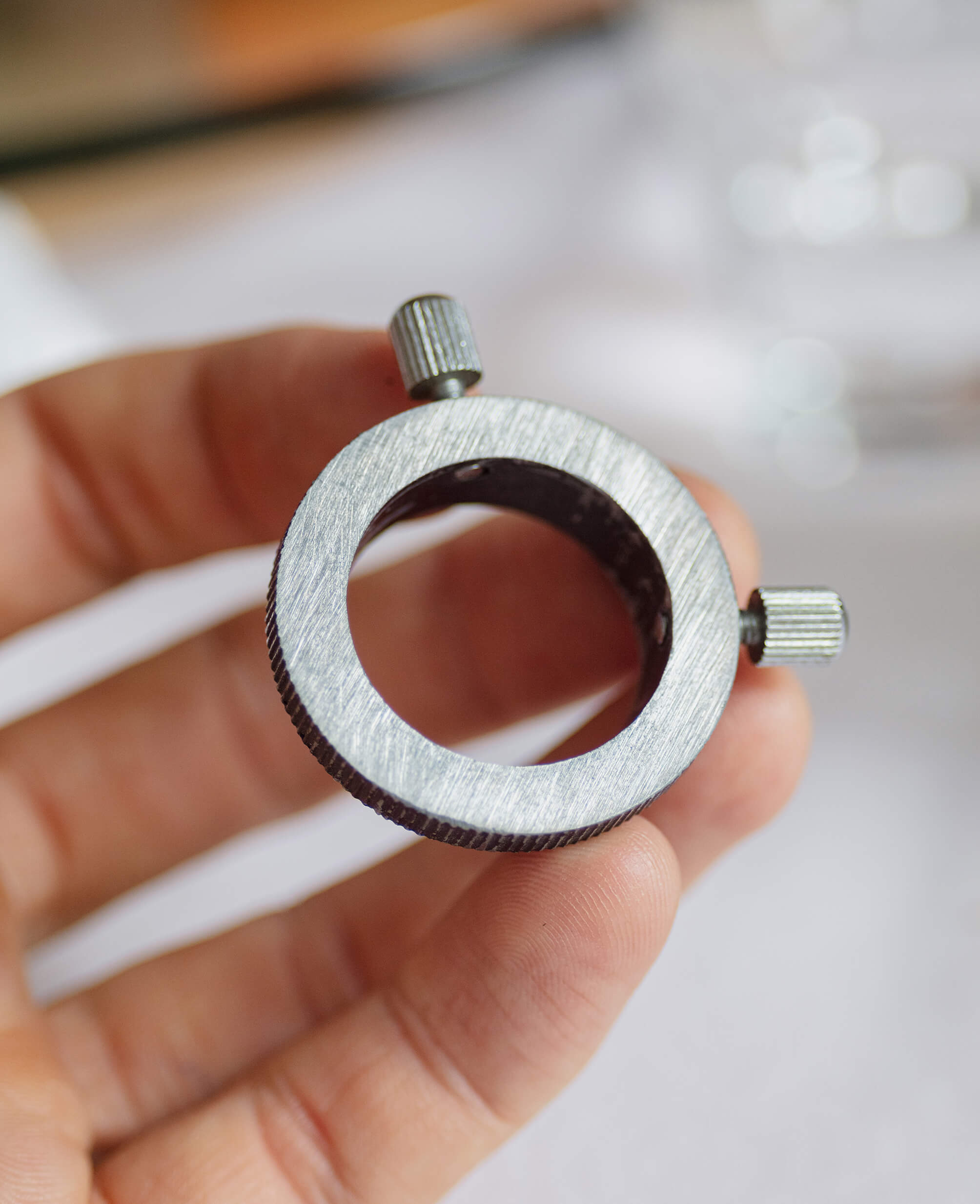
As an architectural structure, the pier is fundamental in observational astronomy: it can be found in the backyards of amateur observatories, as well as in professional ones. This column is a quintessential part of the physical interventions that are necessary to distinguish noise from valuable data. The pier disjoints the telescope from the observer, from the observatory and from the surroundings. Tremors of passing cars, the astronomer’s footsteps and coughs, the neighbour’s soundsystem: they could result in an agitated telescope. A falling mug would cause the instrument to shift lightyears away from its target.
In August 2019, I visited Chris De Pauw, an astrophotographer, at home. He showed me his private observatory. As we were both waiting for clouds to obscure the sun and get softer light for the photograph, he told me about the rolling shed, its advantages and the modifications he was planning on.
On closing the observatory – by rolling the shed over the instrument – he manoeuvred the instrument into its ‘park’-position: an azimuth of 160 degrees and an elevation of 8 degrees above the horizon. The shed’s doors and hinges barely cleared the telescope.

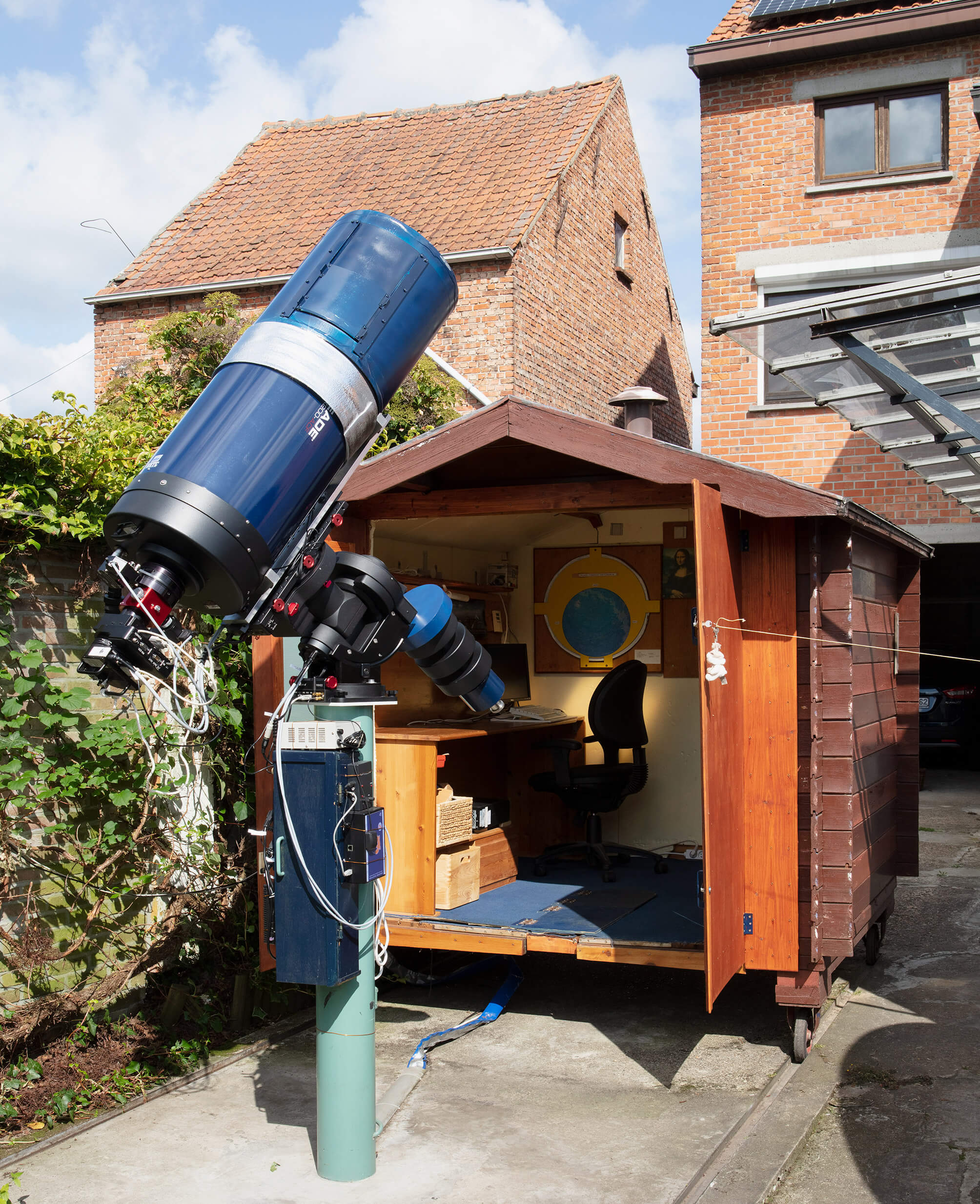
While calibrating their telescopes, or dealing with unforeseen, cloudy weather, amateur astronomers tend to trade the far for the not-so-far, and point their telescopes at their immediate surroundings.
Excerpt from Towards Civil Dusk (De Cleene De Cleene, 2020)

The planet Uranus should have followed a course as predicted by Newton’s laws. It didn’t. There were ‘residuals’, the 19th-century observers said: irregular data, which had to be interpreted as Uranus deviating from the projected trajectory. They could think of three possibilities. A) The planet Uranus was too far away from the Sun, which might render the Law of Gravitation invalid. B) The observations were incorrect. C) There was another planet, still further and yet unknown, with its own gravitational field and pull, causing Uranus to deviate from its course.
Following hypothesis C, astronomers predicted the position of a planet with a gravitational field, influencing Uranus, by means of mathematical calculations. Telescopes were directed to that calculated spot. There was a luminous point, with a touch of bright azure blue.

The 48-inch Oschin Schmidt, a renowned reflecting telescope at Palomar Observatory, California, was used for the Palomar Observatory Sky Survey (POSS), published in 1958, one of the largest photographic surveys of the night sky.
Based on the man’s pipe shadow’s direction, thrown onto the telescope, there is reason to believe an off-camera flash was used to make the picture.
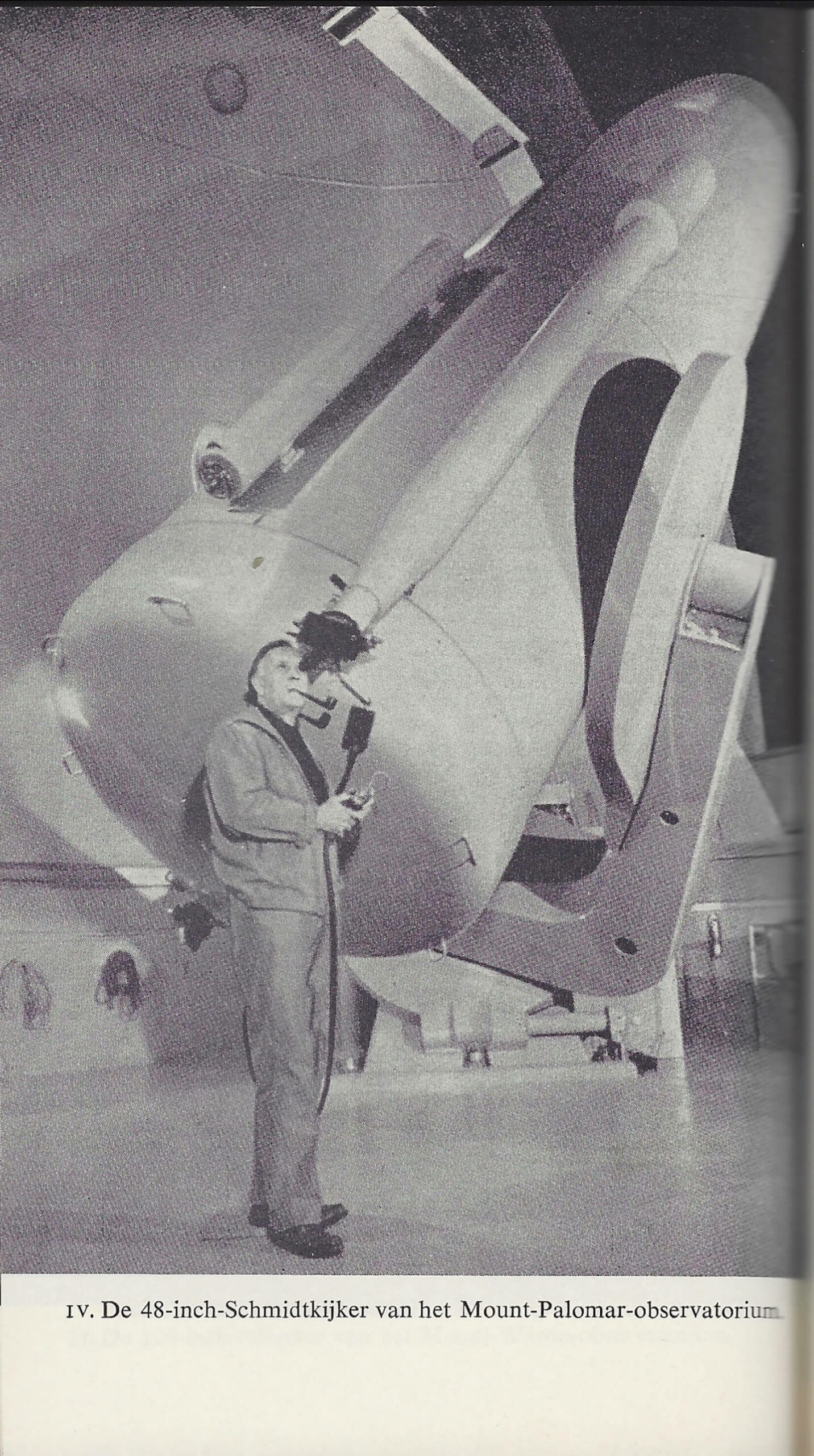
It is said that ‘if a space traveller were unfortunate enough to enter the atmosphere of one of the giant planets [such as Neptune], he or she would not find a single solid surface. Instead, as he or she descended into the planet, our traveller would find that the temperature, pressure, and density would all continue to increase smoothly, with no sharp transitions. Assuming that he or she was adequately protected from the temperature, pressure, and radiation, our traveller would eventually “float” at that level in the atmosphere where the surrounding density and his or her own density were equal.’1
It is said that it storms on Neptune.
Violently.
1200 mph.
They observed a great dark spot and called it: The Great Dark Spot.
It rains diamonds on Neptune.
Miner, E.D. & R.R. Wessen. Neptune. The Planet, Rings and Satellites. Chichester: Springer-Praxis, 2002, p. 18.
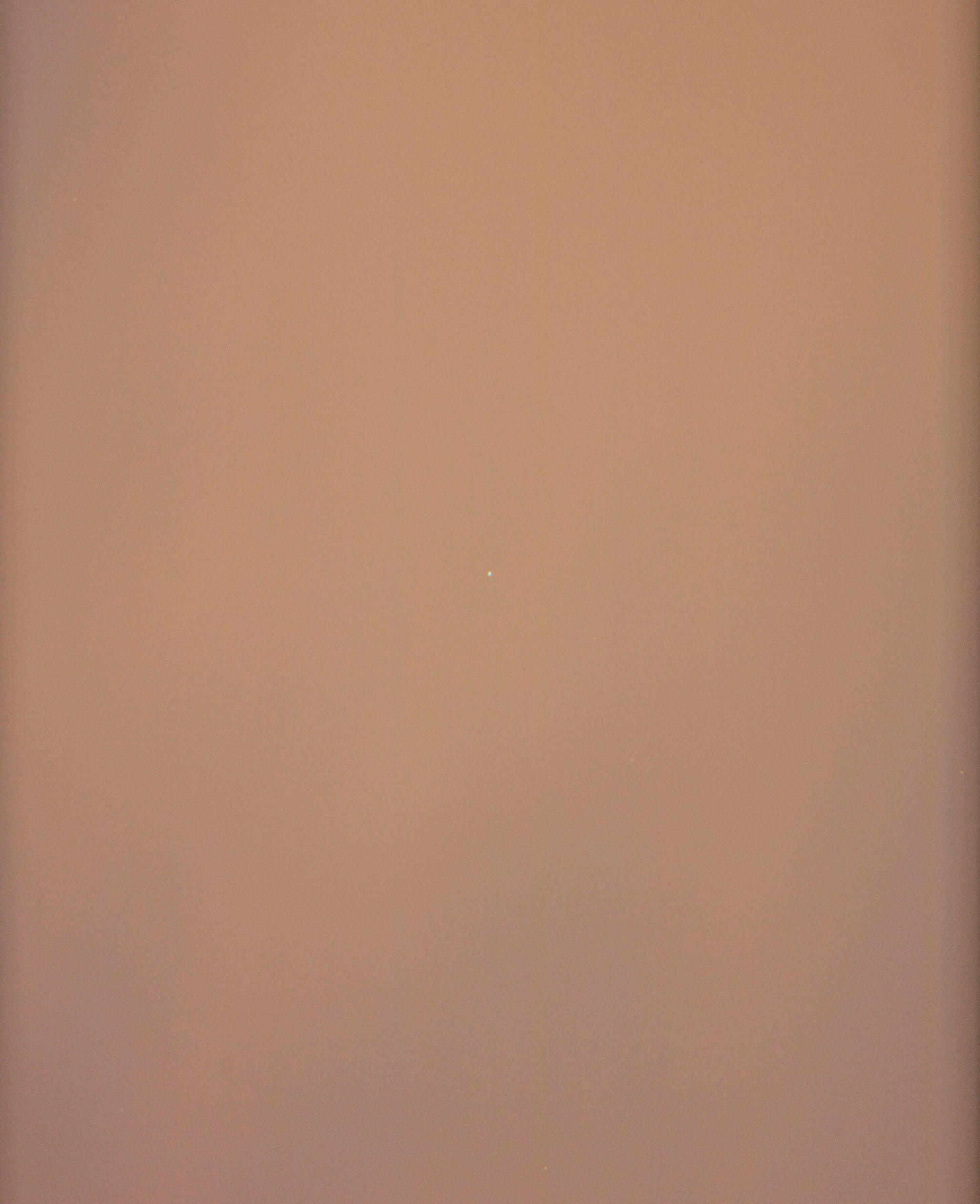
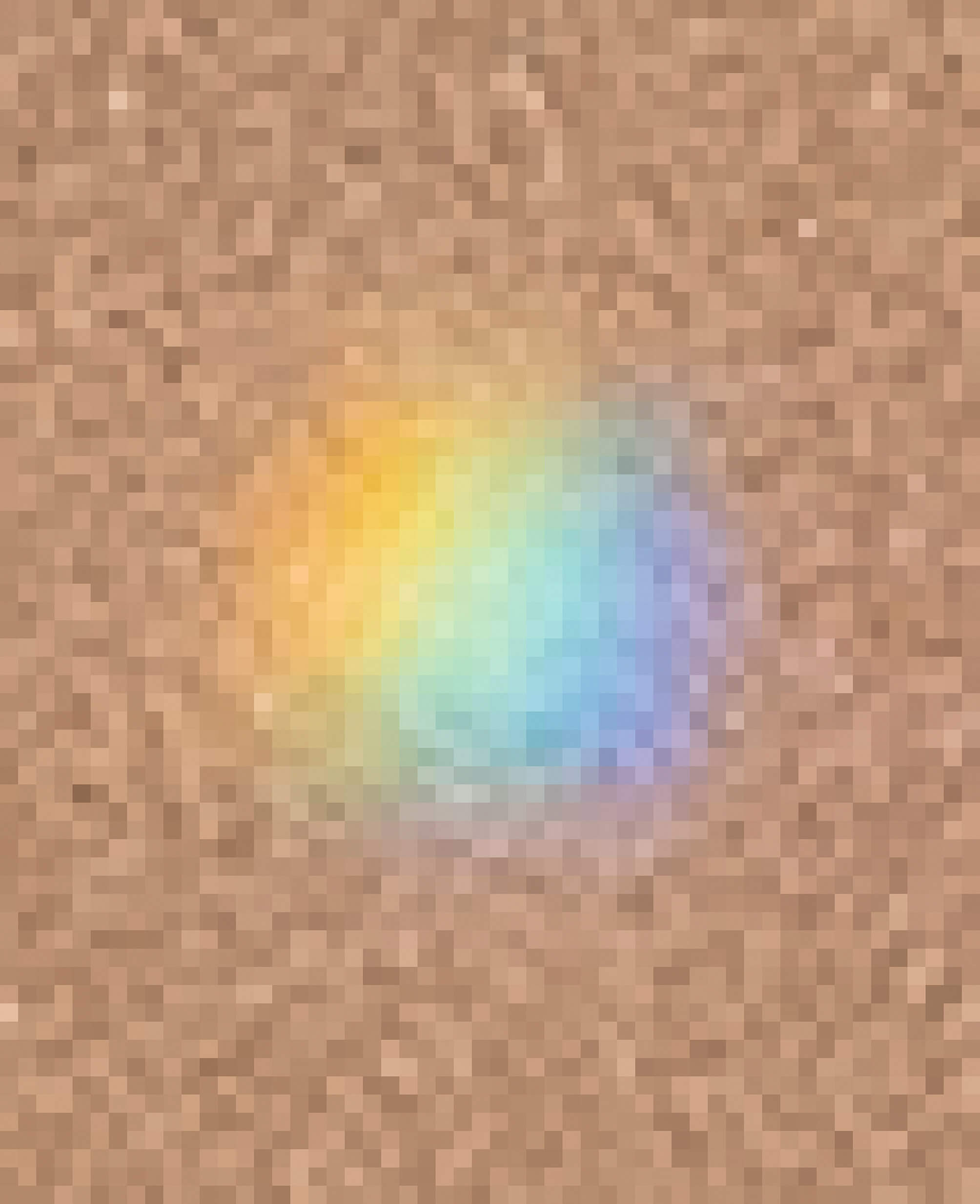
The planet Uranus should have followed a course as predicted by Newton’s laws. It didn’t. There were ‘residuals’, the 19th-century observers said: irregular data, which had to be interpreted as Uranus deviating from the projected trajectory. They could think of three possibilities. A) The planet Uranus was too far away from the Sun, which might render the Law of Gravitation invalid. B) The observations were incorrect. C) There was another planet, still further and yet unknown, with its own gravitational field and pull, causing Uranus to deviate from its course.
Following hypothesis C, astronomers predicted the position of a planet with a gravitational field, influencing Uranus, by means of mathematical calculations. Telescopes were directed to that calculated spot. There was a luminous point, with a touch of bright azure blue.

Robert Nemiroff and Jerry Bonnell’s lesser known project (R.N. and J.B. being the creators of Astronomy Picture of The Day), was making websites containing over a million of digits of square roots of irrational numbers, e.g. seven. ‘They were computed during spare time on a VAX alpha class machine over the course of a weekend. […] We believe these are the most digits ever computed for the square root of seven on or before 1 April 1994.’ Elsewhere, R.N. states: ‘They are not copyrighted and we do not think it is legally justifiable to copyright such a basic thing as the digits of a commonly used irrational number.’ If one wanted to get a copy of the 10 million digits of the square root of the number e R.N. and J.B. computed in their spare time, one can send an email to R.N. at nemiroff@grossc.gsfc.nasa.gov.
https://apod.nasa.gov/htmltest/gifcity/sqrt7.1mil
https://apod.nasa.gov/htmltest/rjn_dig.html
https://apod.nasa.gov/htmltest/rjn.html

(‘Slice of more than three meters in diameter, sawn from a Mammoth-tree, given by California to the botanical garden of New York, and presented there’)
Thiery describes the ‘patriarchs’ of the plant world. This slice of a Sequoia, which fell in 1917 in Yosemite National Park, is 1694 years old. A woman of the New York Botanical Institue, where the slice of the patriarch is presented, counted the rings. If one would look at the picture with a magnifying glass, Thiery writes in a footnote, the reader (with good eyes and a fair amount of knowledge of the English language) would be able to read the labels indicating the important global events the tree witnessed. They are transcribed and translated by the author. The end of the Roman occupation of Great Britain. Columbus arriving in America. The Declaration of Independence. This is a lie: the text is illegible, even when using a magnifier.
In the photograph, the slice, as on view in the New York Botanical Institute, is presented upright. To prevent it from rolling away, two small triangular slices of wood were posited at the left and right side of the slice. The type of wood of these slices, nor the age of the patriarch from which they stem, are known.
Thiery, M. Het woud. Een proeve van plantenaardrijkskunde. Gent: De Garve, s.d., p. 59.

Fairly detailed map of the two major marble quarries on the island of Tinos, Greece. The spontaneous route-advice was prepared by a local marble worker, P.D., in the Karia region of the island on a locally extracted, green marble slab. The waved lines represent roads traversing uphill, while the straight lines represent roads following a contour line of the topography.
‘Tell your friend that the wine is for girls; it’s very sweet,’ the marble worker alerted my travel companion K.S. after offering us local sweet wine. The workshop smelled like boiled meat and bones.
Notes on map from left to right, top to bottom:
- Towards Vathi
- Quarry
- incomprehensible
- Towards Vathi Bleu
- Isternia
- Pirgos
Márk Redele pursues projects that fundamentally relate to architecture and its practice but rarely look like architecture. www.markredele.com

As the hours passed, and while clouds continuously kept us from seeing stars and planets, we started to photograph the set-up used to launch this website. To highlight the umbrella that protected the gear from the unpredictable bursts of rain, we used a flashlight: during the thirty second long exposure, it was lit for two seconds. This proved to be enough to give the whole the feel of an untampered, realistic view. Meanwhile, the website was in all likelihood streaming a grey haze, as the telescope was pointed to the fleeting clouds and gradually spinning along with the earth’s movement to keep track of the same invisible celestial bodies. As we returned to the base, planet Jupiter had become visible to the naked eye.
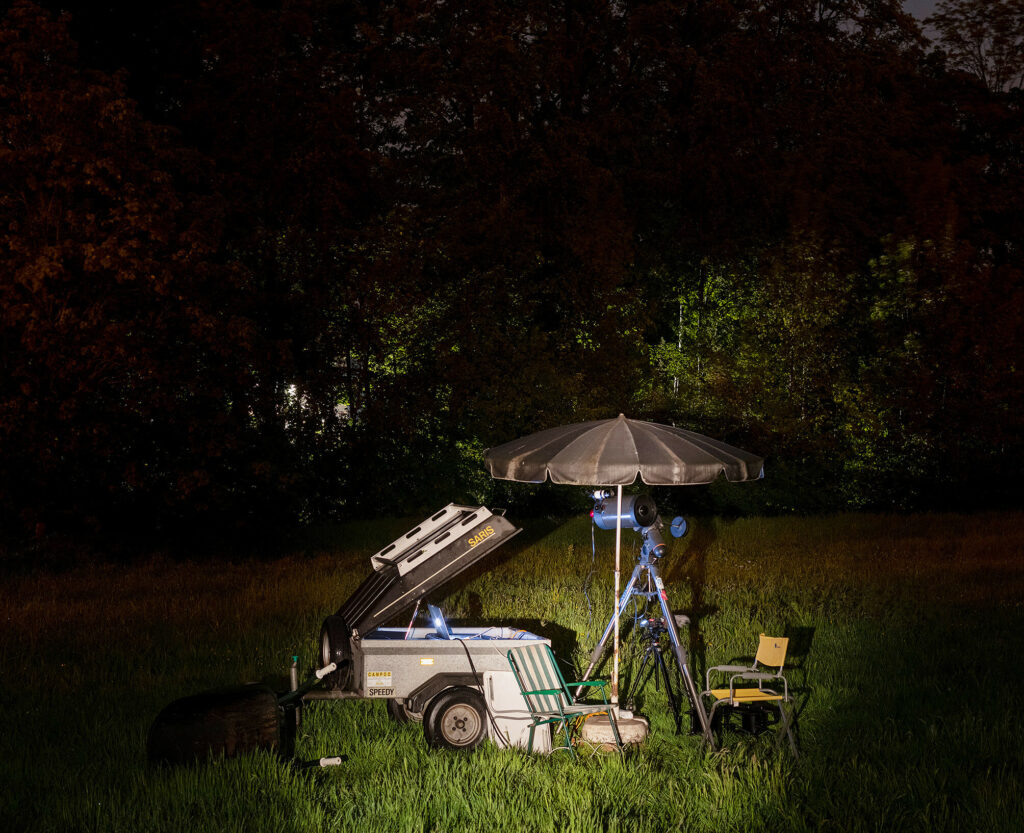
In another exposure of the same length, we left the flashlight on for approximately eight seconds and pointed the beam a bit lower.

During the one day course Safety and Avalanches, teacher G.T. shows pictures of different manifestations of snow and ice. If one learns to read them, one can deduce the wind direction when hiking or skiing in mountainous terrain. Wind direction is crucial for assessing the stability of the snow. G.T.’s examples are of Austrian origin. He speaks about ‘Anraum’: displaced snow can get stacked horizontally against an object, such as a tree or a cross. The snow ‘grows and builds into the wind’. Counter-intuitively, the snow points to the side the wind is coming from. One can expect dangerous terrain in the direction of the ‘unbuilt’ side of the object.
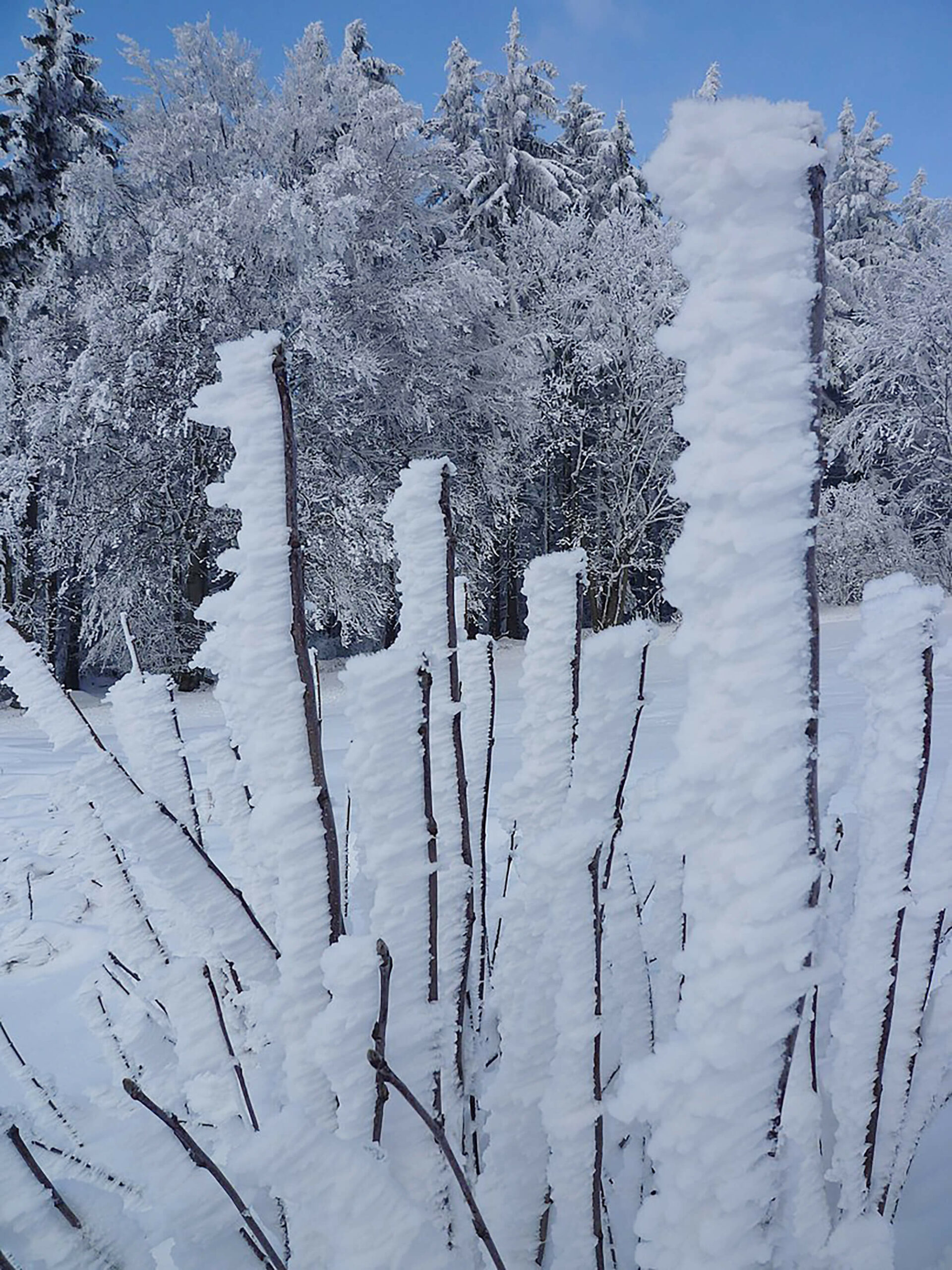
A Sunday stroll near my parents’ house. Along one of the roads between the fields, old poplars have been felled. Young trees have been planted. Each one has a baby blue coloured label, identifying them as Poplar tree, and, more specifically, the ‘Vesten’ cultivar. This cultivar is planted since it is one of the cultivars known for its resistance with regards to bacteria, diseases and insects. The tags on the trunks have staples keeping them together. They’re like bracelets. Come spring, the expanding diameter of the fast growing poplar species’ trunk will tear them apart.
Steenackers, M., Schamp, K., & De Clercq, W. (2018). De INBO variëteiten van populier, een aanwinst voor de Europese populierenteelt. Silva belgica : tijdschrift van de koninklijke belgische bosbouwmaatschappij = bulletin de la société royale forestière de belgique, N°4/2018, 40-47. [5].
https://purews.inbo.be/ws/portalfiles/portal/15044340/Dossier_populier_INBO_KBBM.pdf

Yesterday I had my shoulder checked by a radiologist. He took an ultrasound and saw some minor inflammation of my right subscapularis. After giving me some advice – ‘we could give you a shot of cortisone in the shoulder. It would relieve you from your pain for six weeks and then, without proper exercise, you’d be back where you are now’– he walked towards the door. ‘I propose you do this exercise thirty times, three times a day.’ The radiologists put his right hand on the doorframe, his arm stretched, the weight of his body on it and then leaned forward and back again, while keeping his arm stretched. ‘This will increase the muscles around the sore subscapularis. It will take months.’ After giving me his advice, he sent me back into the dressing room. I put my shirt back on and went into the waiting room. The nurse called out my name, charged me 14,00 EUR and gave me a card. ‘This code will allow you to look at the images of the ultrasound at home’, she said.
Today I entered the code and password and – instead of my shoulder – found the röntgen-images of someone else’s broken heel.
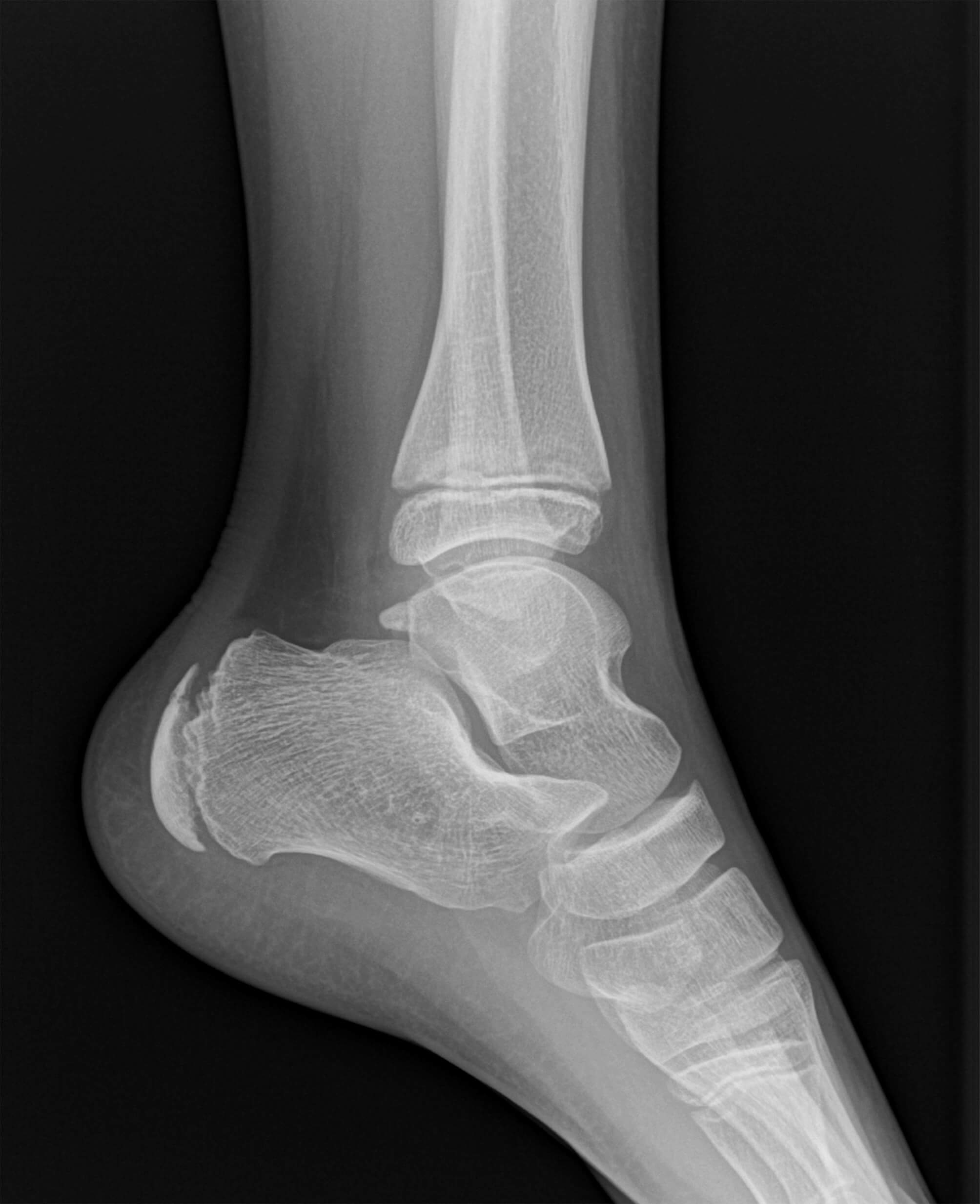
Recreational airfield at Grimbergen, webcam footage.
09:10:00The frame shows the first movement on the terrain. The gate has been opened, the barrier lowered. A black car is in the back. In the forefront, aviation signs on the ground: a yellow cross on a surface painted red; an arrow in a 90° angular shape; two circles connected by a line; a T-shaped line.
09:20:00Two men talking, each one on one side of the barrier. The man on the side of the airstrip has two dogs with him. The aviation signs have changed: the arrow is gone; the horizontal bar of the T-symbol has moved to the other side of the vertical line; one yellow line that made up the cross on the red surface is gone, leaving one yellow diagonal line.
10:09:01A small white aircraft (the two men and the dogs are gone).
10:20:01The aircraft in the same position, with what seems to be an open roof.
10:40:00Aircraft leaving the gas station where it was before.
11:10:01A white car at the gas station, where previously the aircraft was stationed; a silhouette of a man, perhaps.
11:30:01White car gone.
11:50:01Small white aircraft at the gas station; man in red jacket next to the aircraft. Not clear if it is the same aircraft seen in frame 10:09:01.
12:10:01Aircraft appears to be heading for take-off.
12:20:01Aircraft gone.
12:40:01White dots on the grass that appear to be birds.
14:10:00First precipitation: snow, visibility lessens.
14:20:00More snow, wind is stronger; someone has replaced the yellow stripe so that, again, a yellow cross is formed on the red background.
15:10:00The grass and the concrete get increasingly white. No aircrafts, vehicles or persons can be discerned. The aviation signs beneath the thin-layered snow are still visible, and unaltered.
Every so often architects ask me to photograph projects of theirs under a blanket of snow. Snow-days are rare around here. In an attempt to avoid a futile drive along roads in winter conditions, I check webcams near the project-to-be-photographed before setting out.
Webcam Grimbergen, meteobelgie.be: https://www.meteobelgie.be/waarnemingen/belgie/webcam/272/grimbergen
http://www.rvg.be
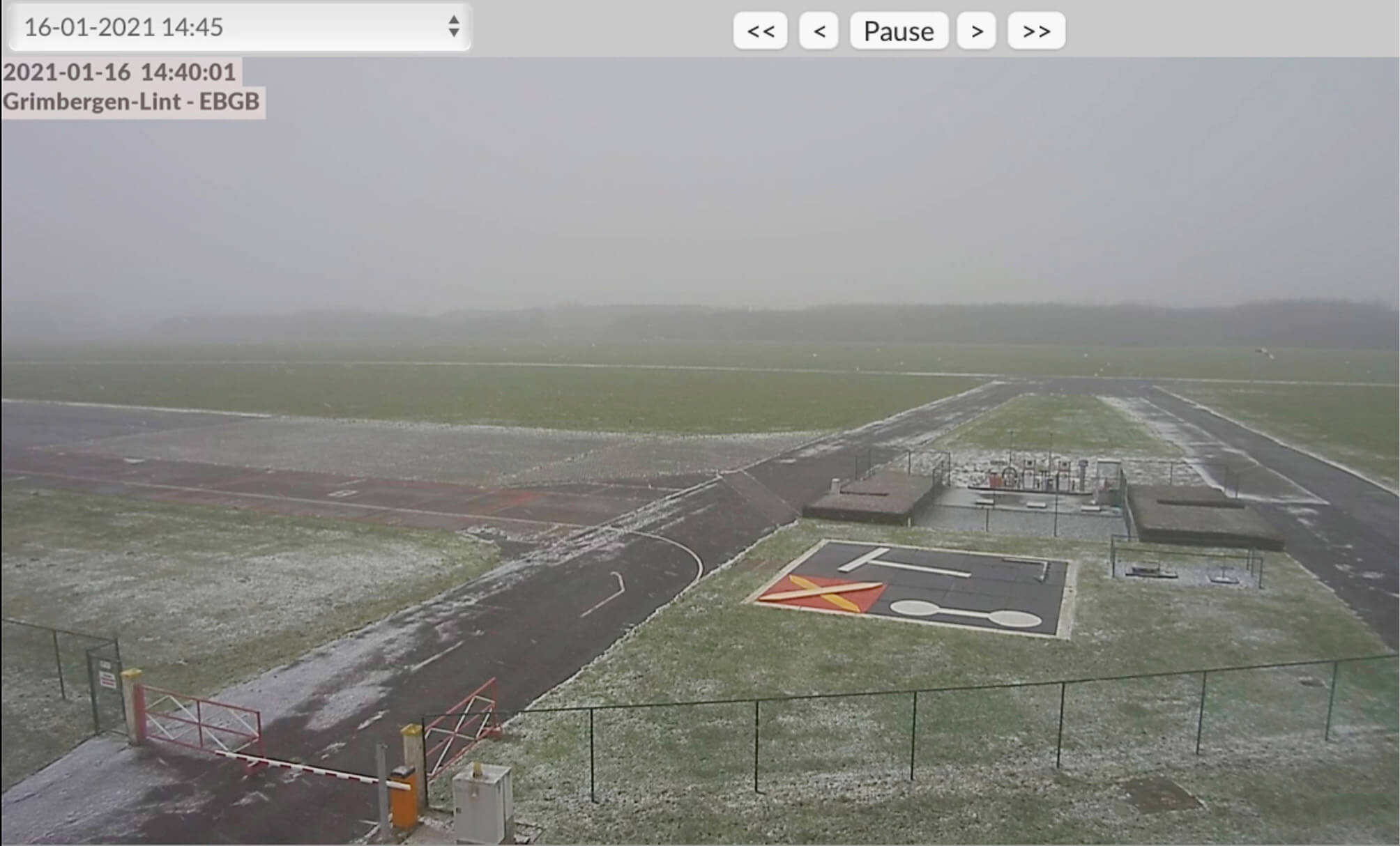
Depending on the perspective one chooses to look at the address, the house is adorned or not. The perspective from the main road is an image made in August 2020, the website (Google Maps) says. Our car is in front of the garage. It must be the end of August. We drive home from the hospital with the newborn, who doesn’t stop crying. Maybe I tightened the belts in the car seat too much. Arriving at our house, we see the slogans and decorations friends have hung at our front door. On the sill of the neighbour’s first floor window, there’s a brick that must have fallen from the second floor facade.
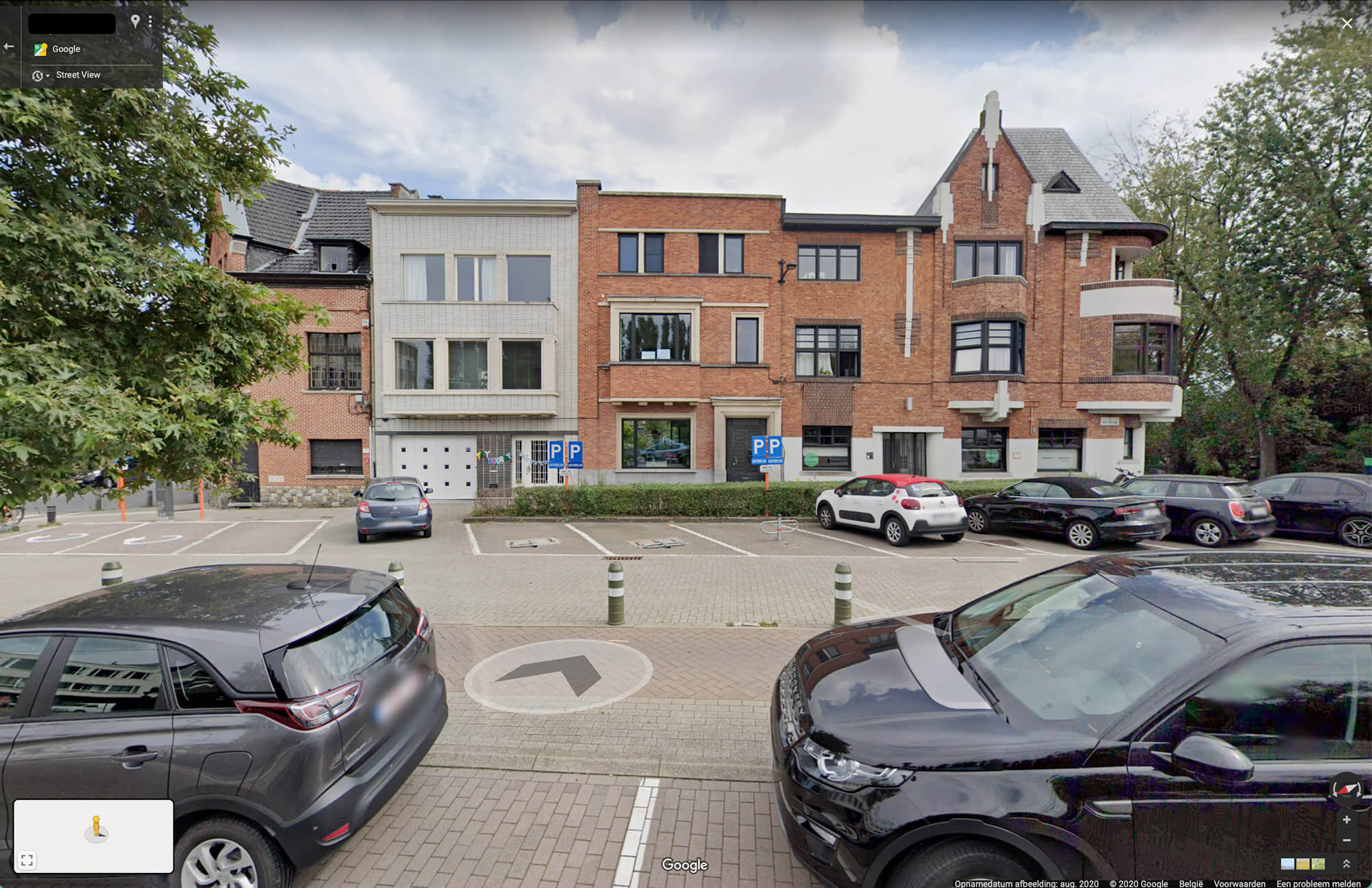
Article 75 of the Royal Decree containing general regulations for road traffic and the use of public roads, published in Het Belgisch Staatsblad on 9 December 1975, lists the rules for longitudinal markings indicating the edge of the roadway.
According to 75.1, there are two types of markings that indicate the actual edge of the roadway: a white, continuous stripe and a yellow interrupted line. The former is mainly used to make the edge of the roadway more visible; the latter indicates that parking along it is prohibited.
In 75.2, the decree focuses on markings that indicate the imaginary edge of the roadway. Only a broad, white, continuous stripe is permitted for this purpose. The part of the public road on the other side of this line is reserved for standing still and parking, except on motorways and expressways.
https://wegcode.be/wetteksten/secties/kb/wegcode/262-art75
